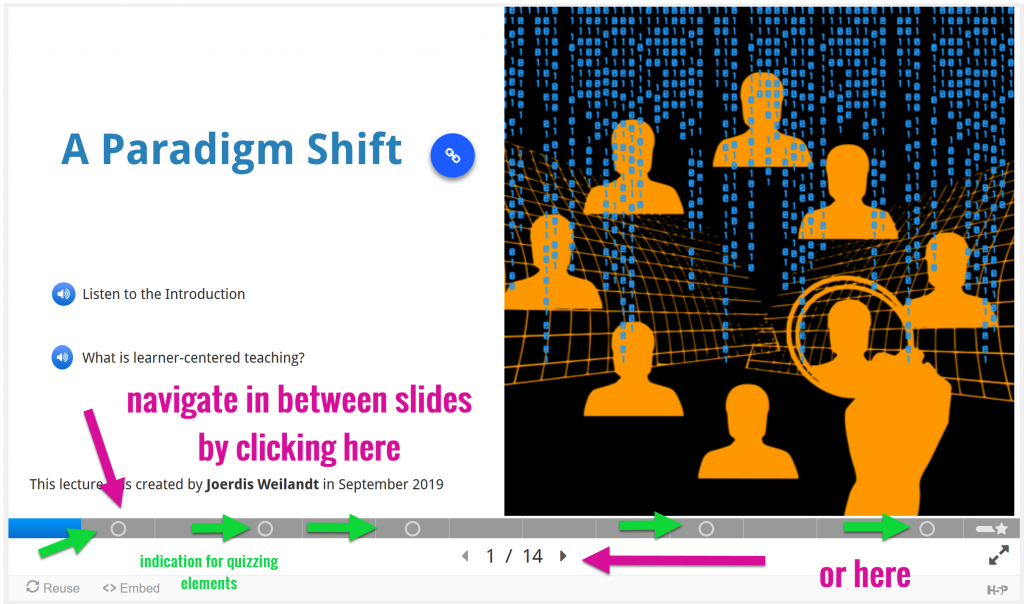4.2 Interactive Lecture (30-45 mins)
Listen to a lecture and compile questions
PURPOSE OF THE TASK: The assigned interactive lecture introduces to you the meaning of learner-centered course design and makes mention of the implications for your development and facilitation of online courses.
TECHNOLOGY: For this task you will be accessing a lecture presentation which has been created with the OER software H5P, a community driven open-software development project that backed by the H5P Core Team in Tromsø, Norway. As past of the lecture, you will need to respond by answering the embedded questions. The presentation contains audio files as well as pictures and links to original academic references. Any content created with H5P can be shared with others with specific permissions if desired.
INSTRUCTIONS:
STEP 1: Access the lecture by clicking on the picture below and then listen to its components. You will need to move in between the slides by navigating as indicated below. Make sure to answer the embedded quizzing questions, which you can check within the respective slides. DUE by Wednesday, Oct. 23, 2019 before midnight.
STEP 2: What questions have popped up in your mind while listening to the lecture components? Write down at least one of them and share it with us on this Etherpad.
References:


